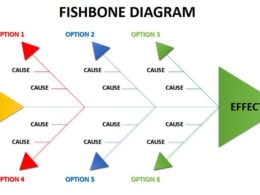 Having an online presence is important- but not nearly as important as having a well-designed, easy to navigate website. Unless you’ve got tons of web design experience, chances are you’ll hire a professional to build your site. Most web designers work under contracts, which can vary wildly depending on the designer, the services you need, and the stage of construction a site is at. Here are some dos and don’ts to be mindful of when creating a web design contract:
Having an online presence is important- but not nearly as important as having a well-designed, easy to navigate website. Unless you’ve got tons of web design experience, chances are you’ll hire a professional to build your site. Most web designers work under contracts, which can vary wildly depending on the designer, the services you need, and the stage of construction a site is at. Here are some dos and don’ts to be mindful of when creating a web design contract:
DO break the contract into phases. If you’re building a brand-new site or overhauling an existing one, it’s a good idea to have several “mini” contracts- one for each task. For example, an agreement for logo design, an agreement to build the homepage only, or an agreement solely for web hosting services are sometimes better than including everything in one contract. (Make sure you have ownership rights to anything created on your behalf.) This is an especially great idea if this is your first time working with a certain designer- if you’re not satisfied with the work after one phase is completed, you can use another designer to finish the project.
DO get a clear timeline. Most design contracts that are broken into phases specify a completion time for each phase. Be sure to note if you need to approve work before the designer can proceed to the next phase.
DO spell out billing specifics. Designers can bill hourly, per task (such as logo design) or per project. Some prefer a specific billing method, which is fine- so long as you can easily approximate the total cost of the project. Stay away from hourly billing if you’re given the option- costs tend to rise and are more difficult to control with this method.
DON’T make the contract too specific. Don’t spell out the design or web programming services specifics (e.g. contract for design of homepage to contain…and pages to contain…) in the contract. The contract should be as straightforward and unambiguous as possible, and can even refer to other agreements, such as a service level agreement, that specifically detail the design work contracted for.
DON’T obligate yourself to more services. This goes hand-in-hand with DO #1 above: don’t enter into an overly expansive contract, such as one that obligates you to purchase future design services or maintenance work.
DON’T let the contract be a substitute for good communication. Sure, the contract will specify billing and timelines, but web designers can be flexible within this framework. If you want to modify design work, make changes, or request additional services, the contract doesn’t bar you from doing so. There’s no substitute for good communication. Work with the designer through each step of the process to make sure you’re both satisfied with the result.






